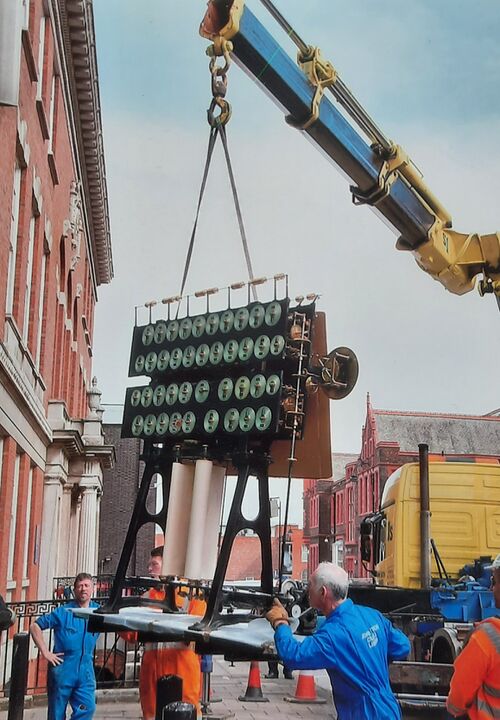The Doodson-Légé Tide Predicting Machine
The Doodson-Légé Tide Prediction Machine
Tidal predictions were first carried out in 1924 at Bidston Observatory (University of Liverpool Tidal Institute), initially by hand and then by early tide predicting machines.[1]
The Doodson-Légé tide predicting machine c.1950, probably at Bidston Observatory, Wirral second largest tide predicting machine ever built. This was a development from the earlier Roberts-Légé machine and designed by Arthur Doodson in the late 1940s and manufactured by Légé & Co. around 1948-49. This much bigger machine was “easier” to set up and, after some additional mechanism added a few years later, could calculate the high and low tide levels and their times at once - effectively halving the time it took on the older Roberts-Légé machine. It is estimated that, using the Doodson-Lége machine, it could take almost a month to calculate a year’s worth of tidal levels for a particular port and these were calculated a couple of years in advance. In comparison, it takes the computers used today a fraction of a second to do the same calculation to greater accuracy. Throughout the 1950s though, this machine was state-of-the-art. Installing the machine at the National Oceanographic Centre Installing the machine at the National Oceanographic Centre The 1.8 ton Doodson-Légé and the 1.2 ton Roberts-Légé machines were recently transported to the NOC’s Joseph Proudman Building. The process took 5 ½ hours and required a large team of people. Staff at the NOC were in a jubilant mood watching the installation and cheered as the first machine to be lifted, the Roberts-Légé machine, touched down on the pavement beside the Proudman Building. The Doodson-Légé machine is a particularly symbolic object for them as it was at the heart of their tide prediction work for international ports from c1950 to the early 1960s." [2]
